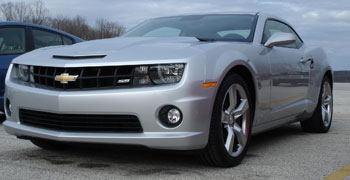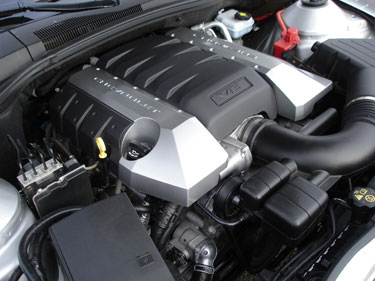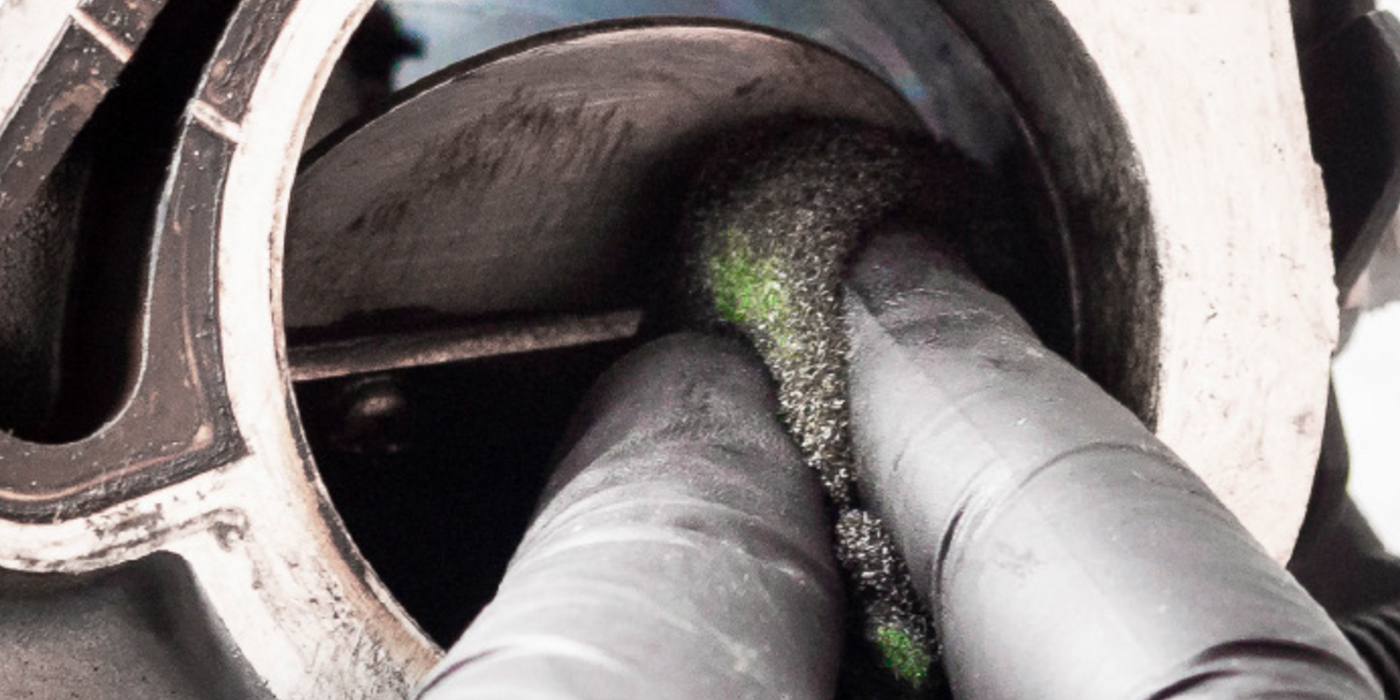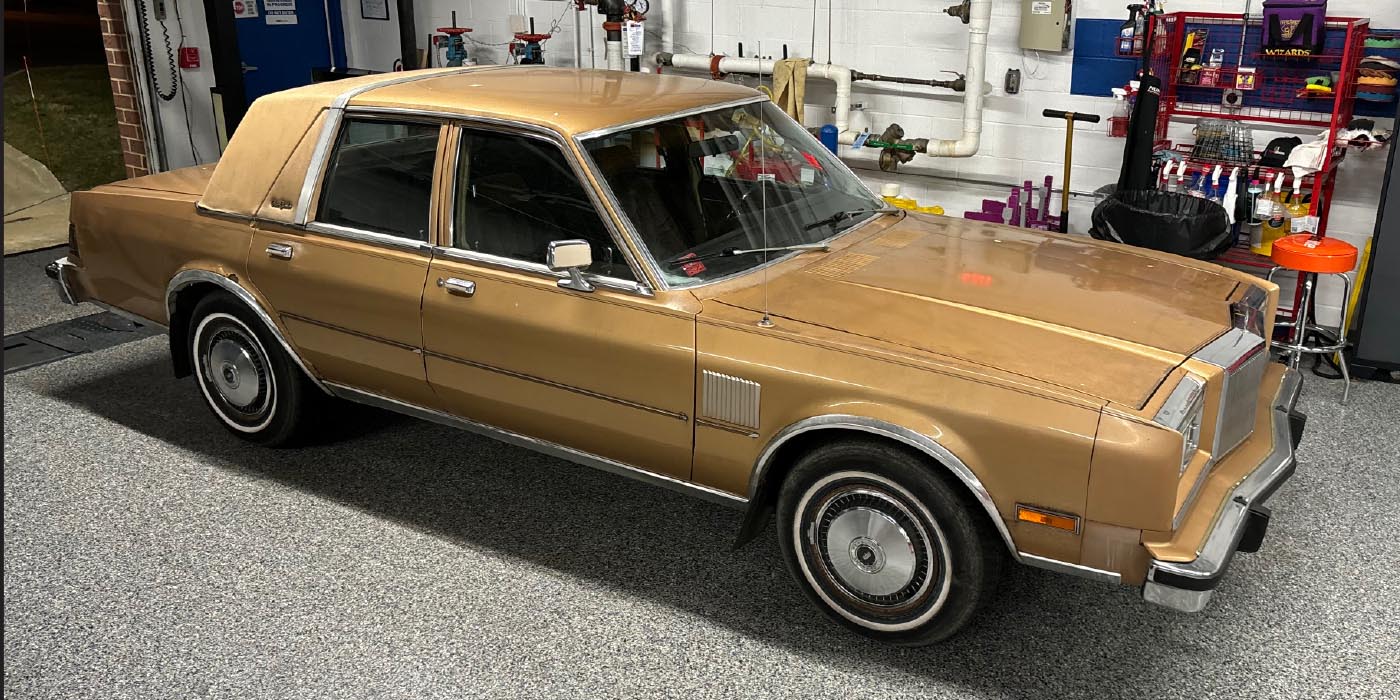Chevy’s new 2010 Camaro with its retro styling not only looks like a ‘69 model, it runs and handles much better than any muscle car from that era. I had an opportunity to drive both the 3.6L DOHC V6 and the 6.2L V8 versions at a recent press event held at Road America race track in Elkhart Lake, WI.

The first Camaro I drove on the track felt really strong and I assumed it was the V8. So, I was rather surprised when I opened the hood and found a V6 sitting under the plastic trim cover. Chevy rates the 3.6L V6 at 304 horsepower with 273 ft.-lbs. of torque, which is 94 more than the V6 in the 2010 Mustang. The 3.6L V6 has all the good stuff: direct fuel injection, four valves per cylinder, variable valve timing and a static compression ratio of 11.3 to 1. Yet it runs on 87 octane regular grade fuel and delivers a very respectable 29 mpg on the highway.
Acceleration is brisk with zero to 60 mph ticking off in 6.1 seconds, and the quarter mile in 14.5 seconds at 97 mph. Top speed with the stock 18” tires is electronically limited to 118 mph, but jumps up to 155 mph with the optional 19”, 20” or 21” tires and wheels. The track wasn’t long enough to test out the V6’s maximum speed potential, but it could hit 120 mph with no strain at all.
Next, I drove the SS version with the LS3 6.2L V8 and 6-speed manual gearbox. What a difference! This car rocks!
Camaro actually offers two different V8s, the LS3 in the SS models with manual transmission only, or a slightly tamer L99 6.2L V8 with an automatic transmission. The LS3 version is rated at 426 hp, while the L99 has a mere 400 hp. The L99 also has active fuel management with cylinder deactivation when cruising under light load (which is not available on the LS3 version). This allows the L99 to deliver 25 mpg on the highway, and 16 mpg in the city, only slightly better than the LS3 version (24 mpg highway). Personally, I’d opt for the larger engine.
On the track, the LS3 V8 felt much stronger than the 2010 Mustang GT and Dodge Challenger Hemi I drove earlier in the day, and would probably give the 2010 Roush 427 Mustang I also drove a run for the money. The independent rear suspension and four-piston Brembo front disc brakes on the Camaro helped it negotiate the curves with predictable ease (unlike the Roush Mustang, which felt very twitchy on the track).
The StabiliTrak stability control system (standard in all Camaro models) was superb yet unobtrusive. It worked so well I was hesitant to turn it off (which is accomplished by pressing the traction control button on the console twice). The difference was dramatic, and the car immediately felt much looser. So I switched it back on.
The LS3 V8 in the Camaro can push the car from zero to 60 mph in 4.7 seconds, and down the quarter mile in 12.9 seconds at 111 mph. Top speed is electronically limited to 155 mph, which this car is probably capable of achieving. The all-aluminum LS3 V8 has a compression ratio of 10.7 to 1. The engine will run on regular, but premium is recommended for maximum performance.
When you pop the hood on this car, there’s not a lot to see. The engine is covered with a large plastic shroud that hides the valve covers, coils, intake manifold and injectors. One service point worth noting on the V8 is the engine’s unusually large oil capacity: 8.9 quarts of SAE 5W-30.

Scan tool diagnostics will require the latest software as the powertrain configurations in both the V6 and V8 Camaro are unique from other Chevrolet applications, though much of the hardware is similar. You probably won’t need to worry about that for a while because of GM’s five-year, 100,000-mile extended powertrain warranty.
– Larry Carley













